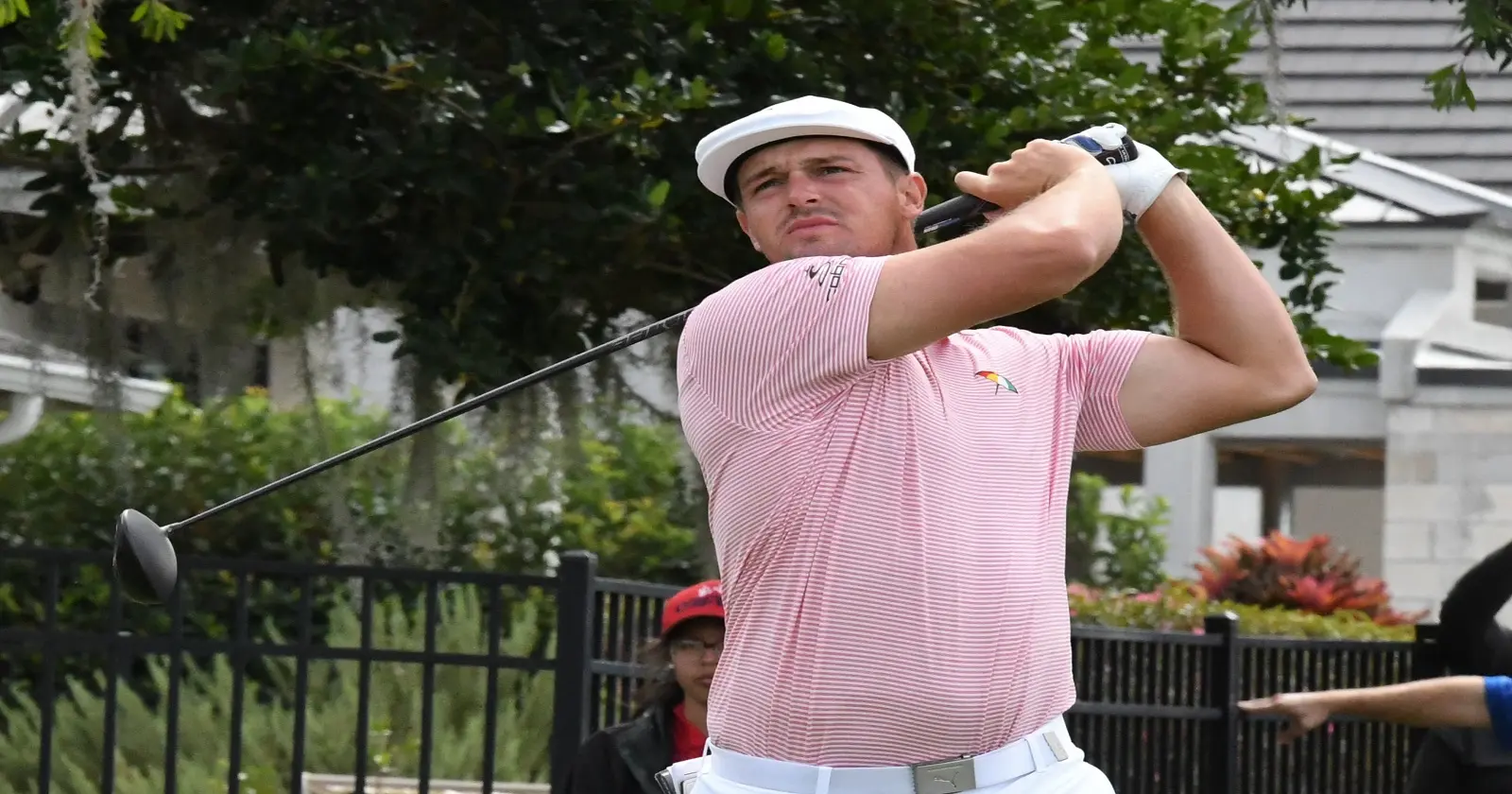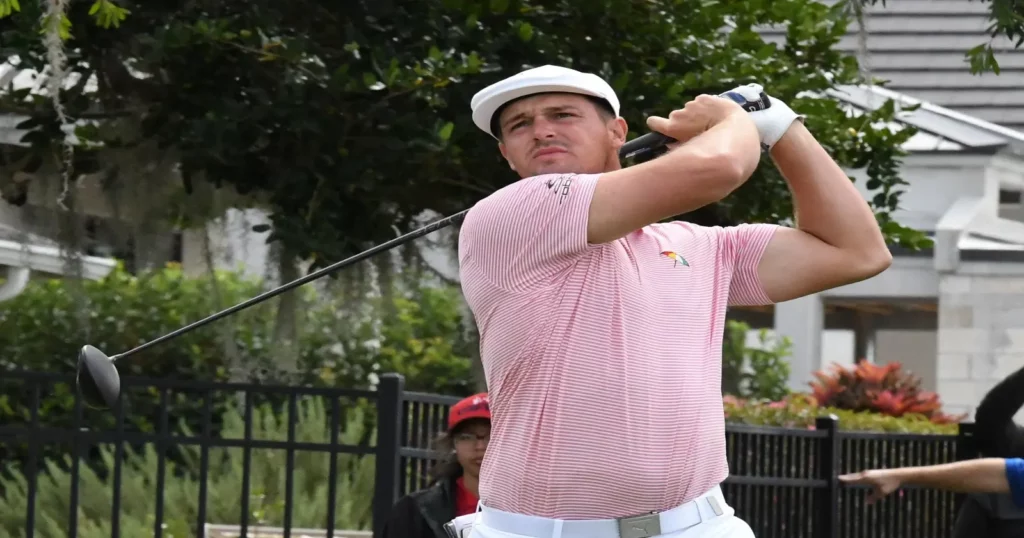Bryson DeChambeau is known as the Mad Scientist of Golf and for good reason. He is known to have taken Golf to a whole new level. Bryson, an American professional golfer who plays on the PGA Tour.
Bryson has never played the same game as everyone else. As a physics major, his aim has always been to find the most scientifically efficient way to improve his game.
He tries to simplify and unlock the secrets of this sport using his “scientific” yet strange approach. And so far, the results have been astonishing. As he has won five PGA tours.
Known for his Puma flat cap and his one-length irons, “The Scientist” or The Mad Scientist, is celebrated for his analytical and scientific approach towards Golf.
While he might have gained appreciation from numerous golf fans, he has also received his share of frowns and criticism for his offbeat golfing techniques. Here are some of the 15 things that you didn’t know about “ the Mad Scientist”.
No 15.
Bryson developed his first set of single-length irons. He and his long-time coach, Mike Schy, ground down a bunch of shaft flexes and clubs to build his first set of irons. All of the Bryson irons and wedges are cut to exactly the same length 37.5 inches long and 278 gms.
Their recline and bounce angles are the same, only the lofts are different. The benefits of a single-length club will allow you to experience your true ball striking potential.
Single-length irons allow you to use the same ball position and set up for every club, giving you less to think about before swinging. Because the ball position and club length are the same, you can use the same swing for every single-length iron, improving consistency and repeatability. Bryson won the John Deere Classic in 2017 with one-length irons. Now the clubs are widely popular.

No 14.
To putt with the flagstick in Until 2019, a player could not leave the flagstick in when a putting on the green. Hitting the flagstick would result in a penalty. With the newest edition of the Golf rules, the R&A and USGA have eliminated the penalty of hitting the flagstick when putting.
That means the flagstick can always be in, and DeChambeau is all about it. Bryson said: “If I accidentally hit it three feet instead of two feet past the flag, it will stay in the cup.” The only time when it’s a poor idea to leave the flagstick is in a situation where the flagstick is leaning forward or toward the player, taking away the space for the ball to go in the hole. It is particularly helpful with quick, downhill putts and chips. So why not use it?
No 13.
Bryson DeChambeau made some crazy weight gains. Bryson DeChambeau has been working on sculpting his body more than ever before. He has added an extra 20 pounds of muscle.
His mighty gain in muscle mass is showing up in his increase strength and ability to hit longer drives than ever! Including a 367 yards drive at the recent Charles Schwab Challenge.
Showing that his workout routine weight gain are contributing to the speed and distance of his drives. Bryson said: I want to try and get stronger, because I know there’s an advantage to be gained. If I could be like Happy Gilmore or Kyle Berkshire, hitting over 400 yards and hitting it straight? That is a massive, massive advantage.
No 12.
The Hogan cap also dates back to his teenage days. DeChambeau calls his Ben Hogan-inspired driving cap his ‘cape’. He saw the cap in a pro shop when he was just 13 and decided to pick one up saying “I wanted something a little different,” and it has become his signature look ever since. It is something he wears only when he plays golf to kind of psych him up for competition.
No 11.
Bryson DeChambeau can sign his autograph lefty and backward. Even though Bryson is right-handed, he can sign his autograph in the most unusual way. He can sign his autograph backward with his left hand.
He spends hours perfecting his handwriting left-handed. In 2016 he said `I’m not really smart, but I’m dedicated. I can be good at anything if I love it” Why? Because of dedication. Sounds simple, for sure. But can you do it?”
No 10.
In high school, Bryson rewrote his physics textbook. During high school, Bryson borrowed a physics textbook from the library and re-wrote all the 180 pages into a three-ring binder.
He did this to save his parents the $200 for the textbook. He explained ‘ My parents have done so much for me in golf I don’t want to bother them” Unusual right? But a genius!
No 9.
At age 6, He understood Algebra!! DeChambeau’s math skills were off the charts. He was a math whiz at a very young age. A young Bryson was a master of mental math and even had an understanding of algebra at age 6. Yes, algebra!
No 8.
The Golfing Machine – Recipe book At age 15, DeChambeau was given The Golfing Machine by his instructor Mike Schy, a recipe book that’s the kind of way Bryson looks at it. A lot of golf fans try to read it, but most don’t understand.
Inspired by the golfing machine, his instructor Mike Schy and himself came up with a single-plane swing called a ‘zero shifting motion’. “Some say my methods are a little weird, but honestly, I’m winning tournaments”, says Bryson.
No 7.
Bryson DeChambeau’s ‘engineer’ putting style works He’s trying to make it all about angles. He’s trying to rotate his left elbow as far externally to its maximum range of motion, and then take his left wrist, trying to rotate it as far the opposite direction as it can possibly go, to its maximum range of motion.
And when you look at his trail arm and trail joints, he’s trying to do exactly the opposite. If you see him and his caddie checking out his yardage book, he’s trying to compute the break and read the green.
No 6.
DeChambeau has a name for nearly every club in his bag “All of his clubs have names – his 60-degree lob wedge is named ‘The King’ after Arnold Palmer and his 6 iron is named ‘Juniper’ after the sixth hole at Augusta, and his 5-iron is named Azalea and the list goes on.
No 5.
The Side-Saddle Putting Technique. If you have never heard of the side-saddle putting technique, you are not alone. It’s a complicated process that required some 200 pages to explain, Bryson now uses AimPoint, a three-step method designed to get an accurate reading on every putt.
The side-saddle putting technique involves a croquet-style approach, with the player’s body facing the target and the putter and ball played at the side of the body. The player uses a longer putter and creates a back-and-through, pendulum-style stroke that goes straight through to the target line.
No 4.
Parasympathetic Breathing Bryson DeChambeau uses parasympathetic breathing to put his body into a state of calm and healing. “Breathing in the proper state calms your brainwaves down,” Bryson says.
That helps you get into a state of recovery. He also follows the MAT-Muscle Activation Techniques, the technique which helps the muscles to contract more efficiently. Parasympathetic breathing helps reduce tension and increase oxygen transport to the brain – which improves focus and performance.
No 3.
Floating Golf Balls Bryson makes each golf ball float in Epsom Salts and water to test for balance. He throws some Epsom salt until the ball starts to float, so the density is equal to the ball. Then he waits to see where the ball floats.
The heavier side of the Golf ball floats to the bottom. It affects how the ball flies in the air, and how much a putt can break. If the ball is out of balance, he puts 60mg of lead tape to see if the ball flips back over. Any more and he discards it.
No 2.
Use of Compass In 2018, He began using a compass during play to “figuring out true pin locations’ DeChambeau said. The USGA applauded his innovation as Bryson always is on the cutting edge. Unfortunately, he had to stop the USGA decided the use of a compass is against the rules
No 1.
Bryson wedges have physics formulas stamped on them. Physics is about the originality of thought, the idea of space and time. The whole concept is about demonstrating the equivalence of mass and energy.
But where Einstein might have stood on how Bryson DeChambeau approaches golf is anyone’s guess, because even the most legendary of swing coaches have a difficult time solving the science behind it.
Bryson and physics are inertly connected and his wedges are testimony to that. All the while, DeChambeau continued seeing things a little differently from everyone else. So what do you think Bryson would come up with next.

